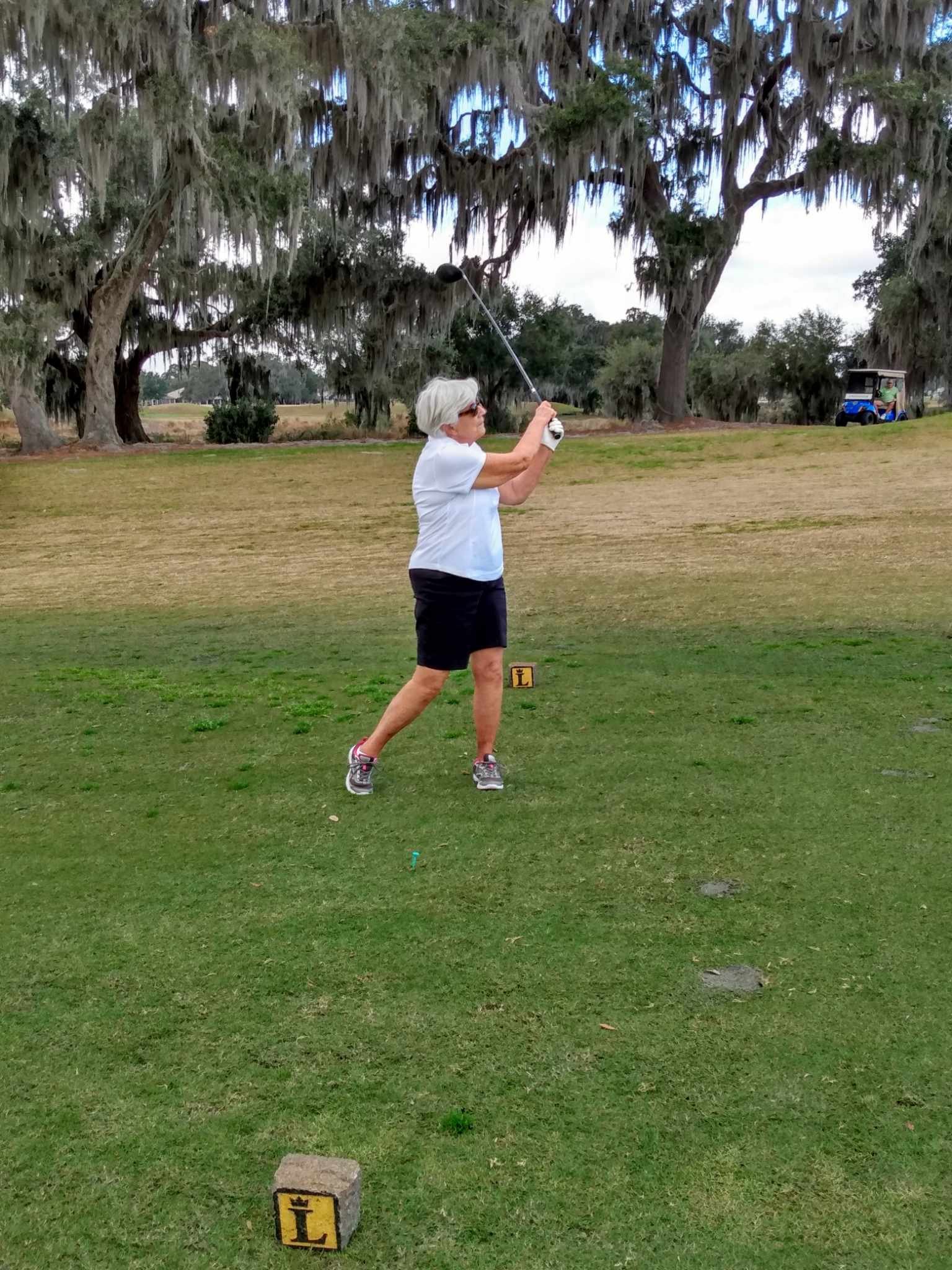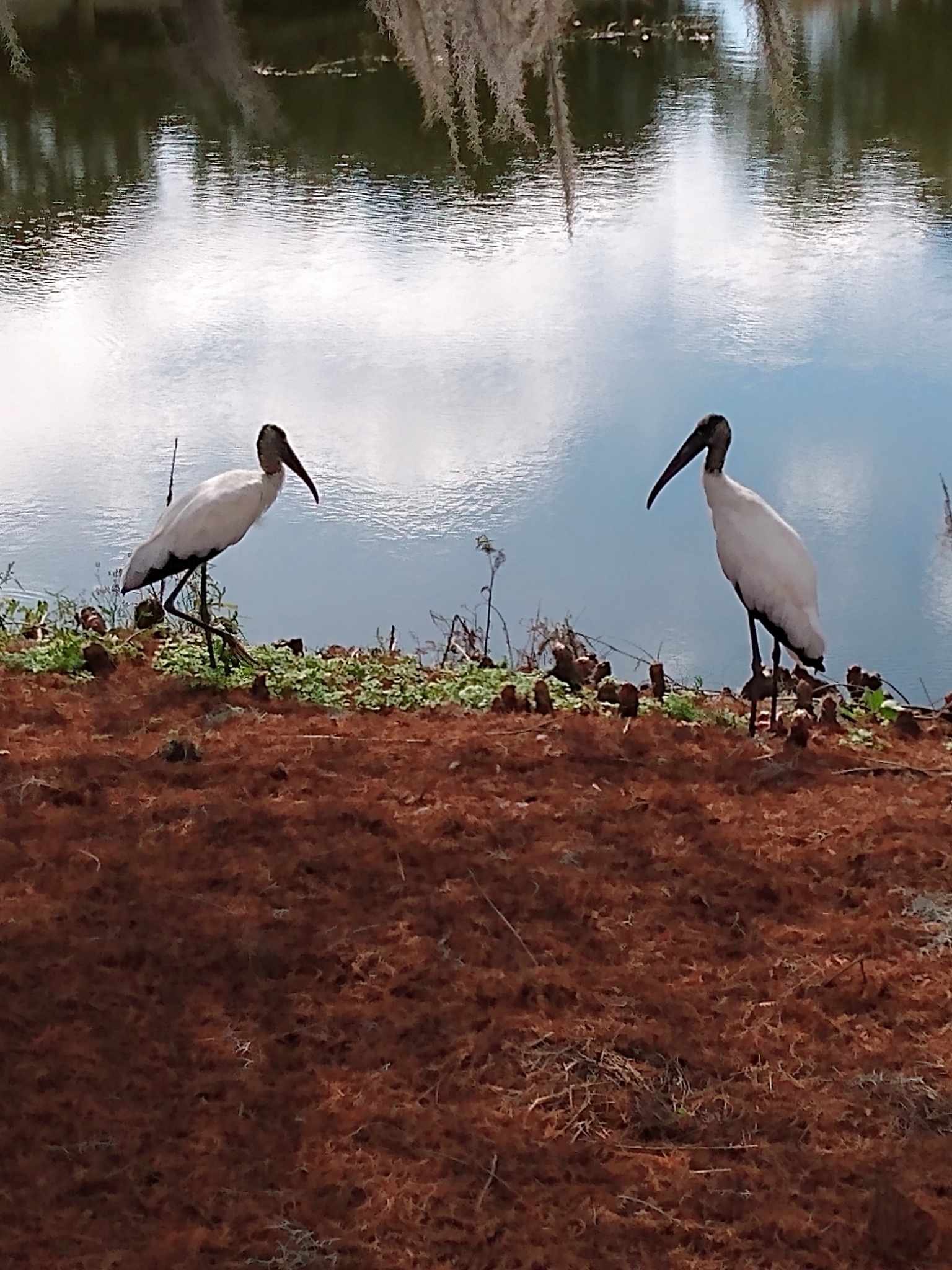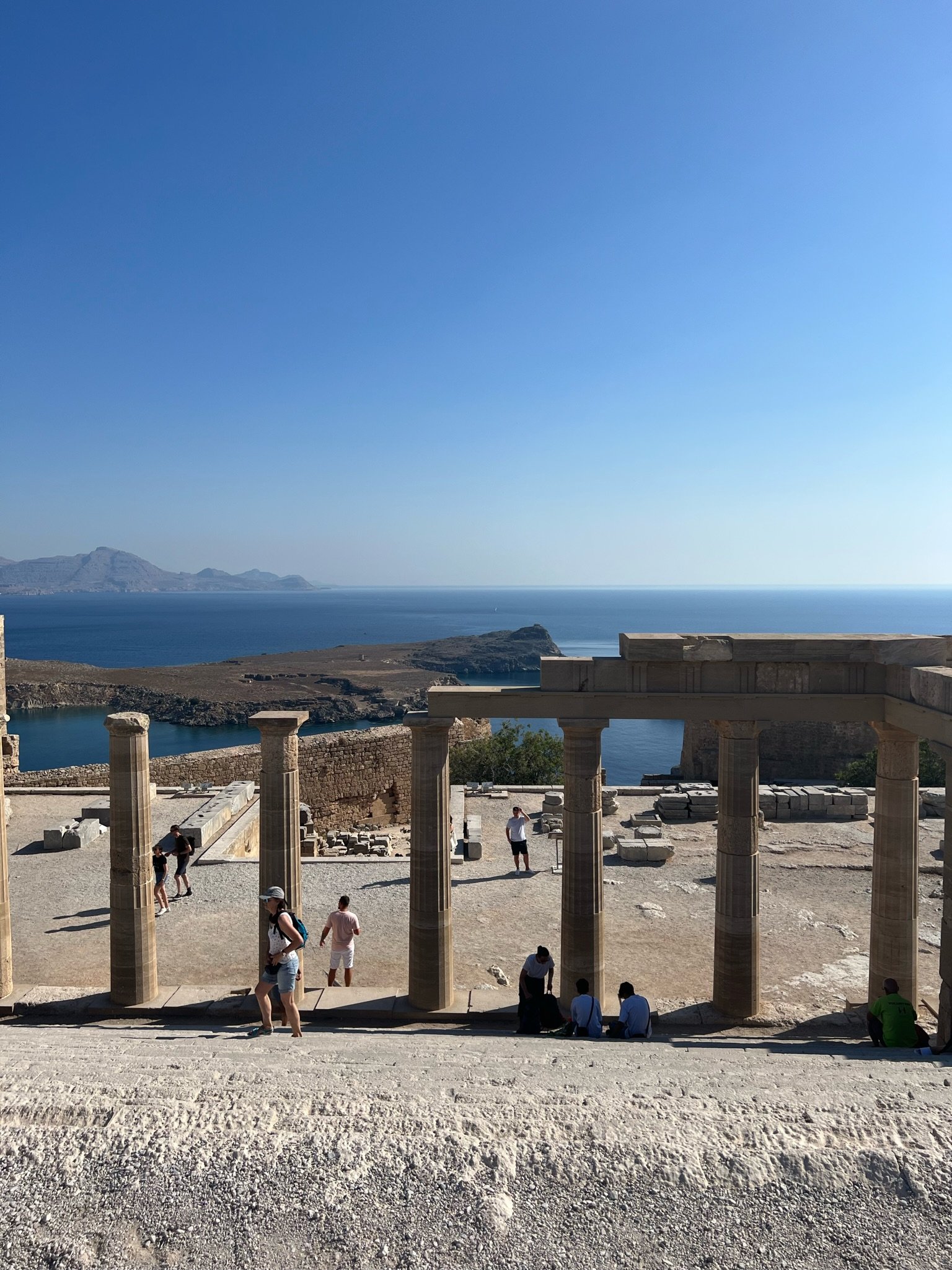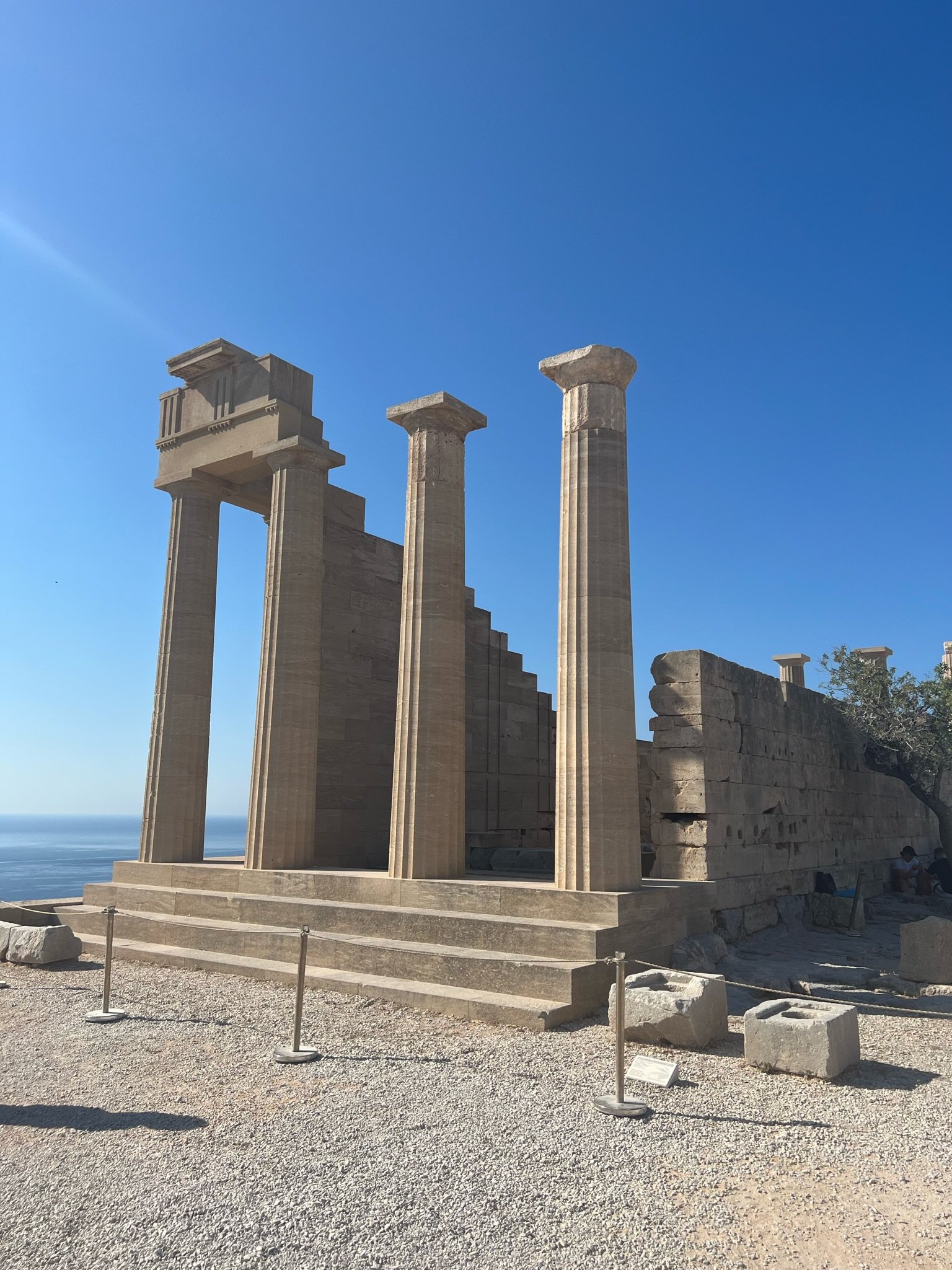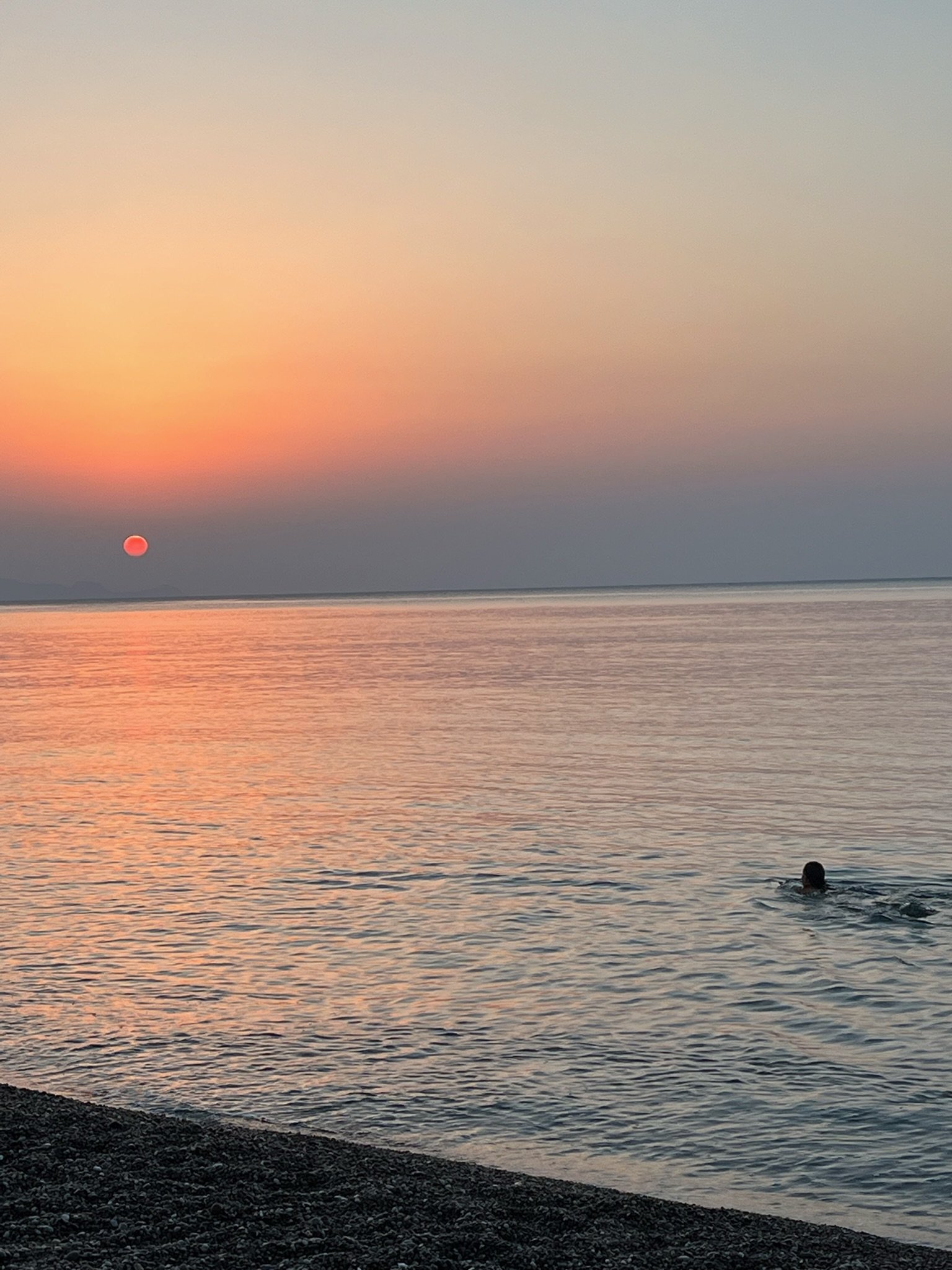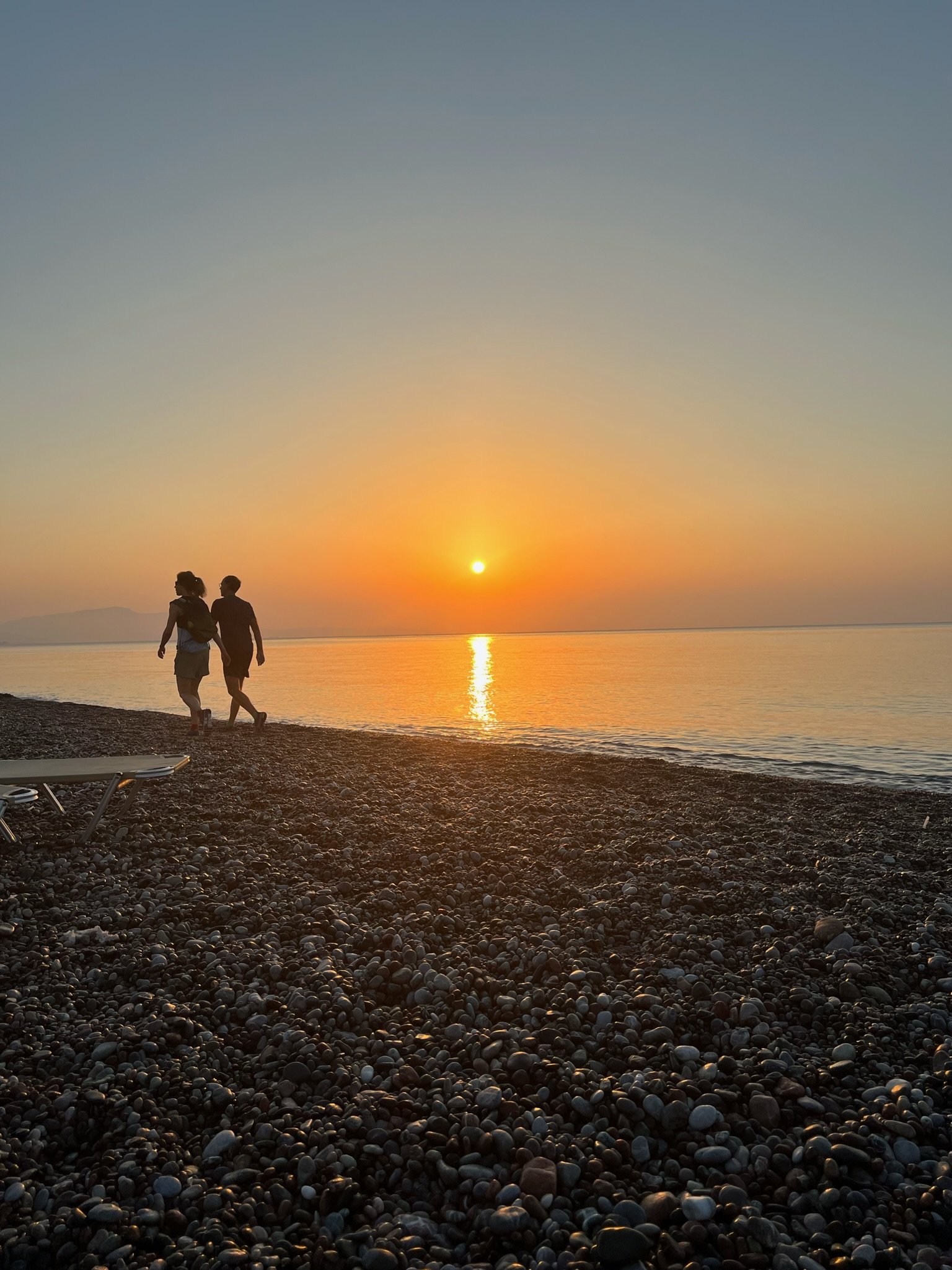International Paneling/September 2023
Image by Horster
Observations on a Portion of the Retirement Population from The Villages, Florida, Part I
by Curt Flowers
Brooklyn
If you've heard of the retirement community The Villages, 40 minutes NW of Orlando, Florida, it might be because of this, this, or this. If you haven't, know that The Villages is a planned retirement community where at least one member of the household must be 55 or older. It's also the fastest growing metropolitan region in the United States according to the 2020 Census.
Honestly, the place sort of gets a bad rap. True, it's a conservative place politically, like a lot of Florida, lately. Most of the retired people who move there come from the Midwest or states such Pennsylvania and Ohio. They move there when their kids are grown because they can't move there before then. No one under the age of 19 is permitted to reside in The Villages. No kids means no snot-nosed teenagers giving the residents the finger as they whiz by on skateboards and electric bikes. No kids means the school system stays manageable, as nearly all of the students who attend public school are the children of people who are employed at The Villages. Oh, kids are welcome, but only for 30 days each calendar year.
People who move to The Villages do so for a lot of reasons, but mostly they move there to chill the fuck out and leave winter behind. There's no winter coats, no snow tires, salting the walkway, or shoveling the driveway. Instead, what you get is year-round golf and the option to run around the developments 36-square miles in a goddamn golf cart, if that's your thing. Golf carts are HUGE in The Villages, most households have both a car and a golf cart, and there are over 90 miles of cart paths to traverse at a breezy 12 miles-per-hour. You can do your shopping in a golf cart, pick up your mail, go to the pool, or nearly anywhere else you might think to go. And while you can't go across the highway, you can go under it via tunnels built to connect the newer developments to the already existing. One day I watched a man park his golf cart on one side of the highway, wait for the "walk" sign at a traffic light, and cross four lanes to get a dish of frozen custard on the other side of the highway.
The lack of seatbelt laws governing golf carts might need to be re-evaluated, though. Take a turn too fast and you might lose your passenger, possibly forever, which definitely happens. Stay away from the built-in drainage along the side of most of the main thoroughfares, as well. My brother and I once watched a woman and her dog fall out of the passenger side of a golf cart when the driver got too close to the curb and the right side of his ride went down into the drainage. Oh, shit! Yeah, that's exactly what I thought, too, but luckily the woman and her dog bounce pretty well. By the time we circled back to check on them, she had brushed herself off, collected her dog, and—I assume—yelled at the driver to watch the fuck out and to pay more attention.
If you think that the relatively new sport of pickleball is cool (or dumb), know that the residents of The Villages were cool (or dumb) before you. Villagers (as they're called) have been playing pickleball for at least 15 years, which is when I first visited my parents there. It's fun, though also not without risks, as more than one Villager has ceased to be after backpedaling and falling in pursuit of said pickleball, and hitting the back of his/her head on the pavement. Game over.
Golf cart bridge built over the Florida turnpike to connect newer sections of the development to existing neighborhoods.
Being retired leaves you with a lot of free time (have heard), and man, do they have some ideas on how to spend it in The Villages. There are 12 country clubs, 55 golf courses, and 119 swimming pools to found within its boundaries. Golf is like, whatever, but the pools are key because climate change means Florida is hot asf in the summer. I don't know why more people don't swim, but it's not that hard to find a pool that you and whomever have to yourself. That's probably because there are three categories of pools: residents-only pools, adults-only pools, and family pools (i.e. toddlers, tweens, and teenagers allowed). NOBODY swims in the family pools, not even visiting families, except mine. Finding an empty pool is crazy easy, and though they are not the best pools The Villages have to offer, I'll take privacy over amenities 9 out of 10 times and ditch the nephews on that tenth time.
There are also more than 2,900 resident-operated clubs in The Villages. Love your Kia Soul enough to start a club for other Kia Soul lovers? You wouldn't have to if you lived there because they already have one. There's also a Mazda Miata club and a Chevy Camaro Club. There are clubs for quilters, pages of clubs for players of the card game Bunco, more pages of clubs for players of Mah-Jong, a songwriters club, a club for retired NYPD and a club for retired NYFD, clubs for ballroom, salsa, and flamenco dancing, scrapbooking, and beginning ukulele. Basically if anything under the sun interests more than one person, there's a club for it at The Villages.
Nighttime is the right time for residents to kick up their heels and live like college students who go to bed at 10 PM.
There are three "town squares" in The Villages, each surrounded by an array of shops and restaurants, and every night of the year there is a live band to entertain you and help you forget how old you are getting as you dance the night away. That's right, more than 1,000 live gigs are played every year there. Are they great? Hmmmm. Are they OK and mildly entertaining? Absolutely, and it's a three-hour show. Cracking that Village nut takes dedication, as well as an extensive set list. I don't know if outdoor drinking is encouraged, but it's certainly allowed which is good enough for me. The concerts end early so the residents can get the hell home and watch a little local news before they call it a day. Walk around the neighborhood after 10 PM to smoke a joint and I can guarantee you will not see another person. They just don't walk around after dark. Why? Because they are already in bed.
Is The Villages the coolest place on earth? Not even on its best day, but it is also not a giant drag. People are friendly and almost unfailingly polite. No one has ever been an asshole to me there (so far), and the same cannot be said of Brooklyn. So, if you or your parents are thinking of moving to The Villages, you could certainly do a lot worse. Better? Probably but I'm not retiring any time soon, and when I do I'll be too lazy to look too far. I would say, "See you at the pool," but I'm kind of hoping I won't.
Shorty of the Month! “Tear, Crackle, Split” by Richard Jochum!
Richrad Jochum’s “Tear, Crackle, Split,” video was part of 2019’s “Digital Fairy Tales: Vengeance is Mine.” The show explored the futile nature of the cycle of violence and revenge. One could also consider ideas such as “Manifest Destiny,” which, when taken to extremes, might lead to consuming ones-self to death on freedom and guaranteed destiny, thoughts which power expansionist thinking. But hey, let’s let the video do the talking!
It’s Time for September’s “Poetry Place”
Image by ANANI
by Richard Houff
St. Paul
When we were here Together
Falling into windswept piles of autumn,
we tripped forward with bright color.
From an opening on the western bank,
far above the river, we giggled like school
children rolling in the leaves during recess.
We traded early disappointments
with youthful shrugs, nothing could pull
us away from our books and paints.
And the ideals of a better life outside
the factory door greetings soon disappeared
like everything else.
Returning to this spot, I count the absent
years and broken decades.
I find myself with an old friend
standing above the river.
I asked after you, and wondered
about your painting
He told me you never had a chance
to develop, and that you ended up
working as a punch press operator.
He said an accident took your hand
a few days before your nineteenth birthday,
and the river took you a year later:
The distance and course, always moving
forward toward the Gulf.
And we are traveling forward
with occasional stops along the way,
like the broken log jam below
surrendering to the current.
News from Maui:
August 8, 2023—Lahaina Burned to the Ground
by Malcom Wong
Tokyo
It’s terrible. I think there will be 100s of deaths and thousands of displaced people. It’s the worst disaster in Hawaii since Pearl Harbor…
Junko was staying at the condo in Kihei the night of the fire with five hula students from Napualikolokelaniin Japan (two mothers, three kids). They’re doing our Maui Hula Immersive. I was working on the land in Wailuku, so I went to Kihei that afternoon, played with the kids in the pool, and ate dinner with them before heading back. We took sunset photos from the condo and wondered about the haze. The winds were so strong we thought it was dust or even water vapor.
The traffic was very light on the road to Lahaina in the afternoon, but at 8pm, the cars were backed up at turnoff going to Lahaina. I thought maybe a tree had fallen on the road or there had been an accident. Traffic to Wailuku — going away from West Maui was very light.
In the meantime, we’re having an active time with the hula students. They’re doing ag, making hula implements, dancing. The day after Lahaina burnt down, we went to a birthday lunch for our realtors’ daughter/granddaughter at Tante Maalaea and Kiharu (the next keiki soloist, age 9) danced Nahiku. People at the party were trying to carry on as you normally would do at a birthday party, chitchat, smiling, and laughing — all emotions held under control. Kiharu danced beautifully and the whole restaurant burst into applause. The 29 yr. old birthday girl started to cry and that catalyzed our party to tears. JoAnn realtor — Junko’s friend from pep squad at McKinley, wrote a check for $1000. The JoAnn-Napualiko grant will fund some kind of relief for Lahaina. The principal of Pūnana Leo o Maui, a Hawaiian immersion school, says this is the place to donate: https://www.hawaiiancouncil.org/
The smoke was billowing black and the husband realizing he didn’t have the car keys, ran back into the house to get them. When he came back out, the smoke was so thick he couldn’t see his wife.
It will take months to find the bottom. They are asking for DNA swabs to identify relatives. The cadaver dogs came in yesterday and they have just started to search. I was told a story by the ex-wife of a fire chief about one of his colleagues who lived in Lahaina. When he and his wife tried to escape, they both ran out of the house. The smoke was billowing black and the husband realizing he didn’t have the car keys, ran back into the house to get them. When he came back out, the smoke was so thick he couldn’t see his wife. He screamed her name but there was no response. He survived… After the fire his friend who had a boat, took him back to his burnt out house multiple times. Eventually, he found her dental retainer and the spinal implant that she had. That was all that remained. There will be many cases where there will be no DNA to identify…
In addition, many were not insured. A multi-generation family who no longer has a mortgage might have neglected to pay their insurance not knowing whose responsibility it was to do so. I think that there are many like that.
The criticism and finger pointing is moot — Lahaina is a 100 yr old town with infrastructure that was not only outdated, but haphazardly laid on layer on layer. On rainy days, there was the smell of gas and when investigated, they discovered that the salt water had corroded the pipe completely away and the gas was running in a tunnel of ground. The wooden buildings on Front St. have been frying in the sun (Lahaina means: cruel sun) and tinder dry. The firebreak around the Lahainaluna fire was 100 yard perimeter but the wind was so strong that embers were flying, power lines were dangling… The wind was blowing offshore and people were trying to get to the ocean on Front St. It’s a long way down to jagged rocks. At night, with the thick smoke rushing over the wall, a very difficult feat…
The mayor, Richard Bissen, has said that donations are not helping. He seems to have no empathy for the survivors. He walked through the War Memorial shelter with an entourage and security where people are sheltering without saying a word to anyone. Oprah has been there everyday, talking to people and finding out what they need. She got flak for having a camera crew there one time, but she went in without them after being told, “No cameras.” There needs to be:
1. a center to distribute physical donations. Sears in Queen Ka’ahumanu Center in Kahului is closed and empty and would work perfectly.
2. People have to get out of the shelters. Some are living out of their cars or in tents by the shelters. There is no place to store clothing, etc.
3. Property owners will have to make some hard decisions about rebuilding. Renters will have to relocate. People will have to have forward movement. They can’t just sit in hotel rooms and not plan what they will do or they will become homeless when the benefits run out.
4. There has been a backlash against tourists. However, Maui is dependent on tourism. Lahaina should be cordoned off and the rest of Maui open for business. People whose housing is not affected but have lost their jobs or gigs still need to pay rent or they too will become homeless.
It will be interesting to see who gets the contracts to rebuild the infrastructure. If they go to Halliburton or Blackstone or rock, it could mean the fix is in. Or perhaps these types of corporations are the only ones with the capacity to handle a $10 billion project.
Meanwhile, I’m working the land and ag, “prepping” for 2024. It’s going to get even crazier… The Palace-Politics-Game-of-Thrones-Lite is way out of control.
Q: Why do the world leaders have to be sociopaths on this plane of existence?
A: Because it is what it is…
Ahuihou!
Image by Juliane Pieper
Never Share an Artwork You do not Own!
by Dirk Lehr
Berlin
I can still remember very well when an artist friend of mine told me in 2006 that he was getting a solo exhibition at one of the most renowned galleries for old masters in New York. A new series of works by the artist was to be shown, which represented references to Caravaggio, Caspar David Friedrich or Gustave Courbet. The exhibition was sold out in no time. After the Lehman bankruptcy in 2008, the artist told me that the gallery in question was bankrupt and had to close overnight. What happened? The gallery had sold shares in artworks. For example, they each sold 50% of a painting to two clients, including a famous tennis player. When such co-owners approached the gallerist during the banking crisis in 2008 and wanted to sell their shares in the pictures, it turned out that the gallerist had not only sold the picture to them and another co-owner, but the same shares to different people several times. An easy game for the gallery owner, since he was storing the works of art for his customers and nobody had claimed ownership of them up to that point. The works of art served purely as an investment. This case made waves in the media. In view of the fact that the monthly rent for the house in which the gallery was based was said to have been US$ 175,000, it is not surprising that the gallery owner had to be inventive to be able to cover such costs. I was already wondering at the time how one could come up with the idea of sharing a work of art with others and then leaving it to a third party for safekeeping. Such a thing would never be an option for real collectors. Owning a work of art is a personal matter, one builds a relationship with the work of art. Such relationships are indivisible.
Apparently, however, there is a need among certain people to want to participate in the high-end art market without being really interested in works of art.
Apparently, however, there is a need among certain people to want to participate in the high-end art market without being really interested in works of art. Is it vanity or greed that suspends the mind? There is no other explanation for the fact that such structures of participation always find customers who are willing to pay large sums in order to be able to participate in works of art. In the most recent past, two such systems were exposed. A young art dealer traded as a shooting star sold shares in artworks that together totaled more than 100%. When asked by the court why he did this, he is said to have replied “out of vanity and greed.” An art consultant who had also sold shares in artworks did not pay her clients after the works were sold through auctions. She kept the proceeds to herself in order to be able to finance her extravagant lifestyle and/or used them to pay off other customers. She is said to have run a real Ponzi scheme. Were these cases a warning? I have my doubts. The high-end art market is characterized less by genuine interest in art and passion than by investment considerations, vanity and social recognition. In such an environment, there are naturally figures who cannot withstand desire and want to adapt their lifestyle to that of their customers. It is obvious that one or the other comes up with stupid ideas. The thought of viewing works of art as capital investments is not strange – one may or may not criticize that. It is strange to think that one shares works of art with others without ever having owned the work.
3 Questions with Poet and Musician Dick Houff!
Richard Houff has been making poetry and music all around the USA, and sometimes, in Europe since the 1960s. If you ever get a chance to meet him, get ready to sit back and let him spin some amazing tales. His travels have connected him with a variety of literary and musical legends. He has also published books for others and is generally an all-around nice fella! Let’s have a look at the questions…
1. Greetings! Wow, you have had an amazing career. Can you tell us 2-3 anecdotes about your life as a bluesman, your friendship with Charles Bukowski and your beginnings as a poet?
2. You have had a ton of great friends who influenced you. Can you tell a bit about that and how they influenced you?
3. What’s are you working on now and what are you excited about? Maybe you can share a link about how to find out more about your work?
Image by Tom D. Rotenberg
A Crypto Story
by Mark Bailey
Minneapolis
When I first heard about cryptocurrency, I considered it a novelty for geeks and hackers. When I bought my first bitcoin in 2014 for a couple hundred bucks, investment was the furthest thing from my mind. I was thinking more in technological than financial terms. Bitcoin was new tech and I just wanted to play around with it.
At the time, there were really only three places to get bitcoin that I was aware of. You could produce it yourself by mining, which even then required expensive specialized equipment. You could go to Local Bitcoins and find someone who would sell you tokens for cash in a hotel lobby somewhere. Or you could use Coinbase, which is basically the Wells Fargo of crypto. I went with Coinbase.
Around this time, crypto began experiencing explosive growth. Prices kept going up and innovative tokens were coming out every day. Bitshares created a decentralized global market for custom tokens. Ethereum popularized smart contracts. Steem built a censorship-proof social media network on a blockchain.
Shortly thereafter, the introduction of NFTs took the crypto space to the next level. The idea of digital goods with verifiable ownership and provenance helped propel NFTs into the mainstream. Suddenly, art was cool again, and people were actually getting paid for digital art. And many companies began looking seriously at using NFTs for things like insurance contracts and property titles.
By this time, I was deep in the crypto world. I had friends in some of the top projects and wrote for the industry. Everyone was excited about the future we were creating together. It was a future of disintermediated finance, free from predatory middlemen, that used computer code to enforce contracts and encourage collaboration. Of course, not everyone involved had pure motives.
There were some epic scams like Bitconnect and FTX. Meanwhile, hordes of traditional finance people invaded the space, carrying with them the toxic values of the legacy system. From my perspective, they were trying to bring crypto entirely into this legacy system. And when they could not, government regulators began attacking the sector.
This regulator attack has done incalculable harm to blockchain economy here in the US.
This regulator attack has done incalculable harm to blockchain economy here in the US. One by one, all but one of the exchanges I relied on stopped providing services to US residents. Coinbase, the last exchange standing, has so far defended itself adequately against the onslaught. But there's no guarantee they'll be able to keep it up.
All of this sets up an interesting situation. It's as if we're back in 2014, where the only places to get bitcoin are Coinbase and the random people you meet on the internet. I'm certain that this state of affairs is temporary. A single crypto exchange operating from a country that doesn't recognize US authority is all it would take to wake the sector from its current slumber. Given how profitable such an exchange would be right out of the gate, I'm pretty sure someone will make it happen.
Artist-run Spaces are Fun! A True Optimist's Observations in Bruxelles
by Balazs Kulcsar
Brussels
We tend to believe that art is a profession, don’t we? We are happy to pay 65 EUR to visit the big money showcase called “Art Basel,” with all its Picassos, Basquiats and Richters. When we are in Paris, we jump into Gagosian to see Selah Sue. Then we walk the High Line to W19th Street to David Zwirner's gallery for the Wolgang Tillmans. We learn the biggest names and trust in the Gods of Art Market to maintain the prices and reputations of Jeff Koons and Gerhard Richter. Bigger money means bigger art, don't you think?
I love walking in Chelsea, checking out the galleries. But as Anikó Erdősi, Gallery Director at Marc Strauss, explained, fully accepting the New York art market means that you think New York is placed exactly in the middle of the world. Which is, by the way, a kind of truth. But at the same time, this thinking prevents you from understanding the richness of other cultures, places.
Maybe London could be in your map, but they are hit by Brexit, and it’s not such a fun place anymore. So, you say Berlin, which was a paradise for artists and creative people, until it became impossible to find a place to live. You don't necessarily say Paris. Ah, Paris--for the uncurable romantics. A city of love and light. But is it?
Nowadays, Paris is only for the superrich. For those twelve people who can afford a duplex near the Eiffel-tower. For the rest of the population, near-Paris or suburb-Paris is the new normal. In this area, the wealth gap is revealed, and the frustrations of the immigrants threatens daily conflicts. And yet you pay all your secret money for a 20 square meter flat.
Romantic dreams? All my Parisian friends told me “Couch-surfing is over,” they said. They escaped to Marseille for the sun. Or to Brussels (“Bruxelles” is only for the non-French speakers), for the low rent prices.
“Bru-what, I asked? Is that a real town or only office-space for dossiers?” I laughed. “You will be surprised at how comfortable this jewel-box is,” my friends all said.
“Let's check it out,” I said to myself.
After my first Google search, the answer was a clear “No.” No MoMA, Tate, Centre Pompidou, or big galleries. I will be bored, I thought.
One friend started an artist-run-space (how the hell in two months?), so I took a deep breath and decided to start there. It is in a typical house in London--sorry, in the capital of Belgium (was it England at some time ago?). The house is thin, old and you feel the history from the first moment you set foot inside. My friend went down to the cellar and bravely pointed to the 4 m2 'room'. “Do you like it?” he asked. And I had no words. I only searchied for the hidden cameras, because I was pretty sure I was scammed.
But after some smiles were exchanged, I had to say, “Uhumm, well, it's not the Tate Modern!” Was that the end of our friendship? Thanks God, it was not! And only an hour later, I saw the Belgian 'Tate Modern,' building as well. It's as big as a garage. A restored power plant, they say. It has four exhibitions at the same time, each one about as big as your bedroom. My other friend then called.
“I just heard that you are in our town. Come to my studio, it's three tram stops from where you are now.”
“Oh great,” I answered. “But if I enter your studio, you will have to come out to the street!” I joked.
“Come on, it's an old factory. Good for 20 people.” And it is. 300 m2 on one floor alone.
“Wow! How could this exist so close to the city center?” I laughed. But the next sentence is what I expected.
The rent is cheap. And as an artist, you can afford a small studio AND a place where you can show your work.
“I manage an artist-run-space,” he replied. “It's common here. The rent is cheap. And as an artist, you can afford a small studio AND a place where you can show your work. With 3-4 buddies you can rent a place like this. You are not a snob, are you?” he cried. “Not only the big galleries exist. But if you still have doubts, you can go to the Vanhaerents. They have Ai Wei Wei and Tracey Emin waiting for you.”
Lead by this advice, I visited the webpage. “One visit in every three months. And max 15 people per visit,” it said. I will fit into the 2045 visit. Better to call another Brussels-based buddy, who has a nice collection.
“Actually, you can come by this afternoon, but don't tell anyone!” Sure, I won't. This is another old factory, but this one is huge. Huge means here it's bigger than your living room. Artist's crates are everywhere. I'm pretty sure it's a joke as well. ”We have 2000 artworks, but we show only 30 to you.”
“This is the philosophy,” A girl I met in a nearby pub explained to me afterwards. “Here, if you have a lot of money, you don't put it under other people's nose.” She went on, “I had a boyfriend, and after two years I haven't even met with his parents. I now know why: they had a castle in the south...”
Next morning Nele Verhaeren, organizer of Art Brussels and Art Antwerp, explained further. “Brussels is not Belgium. If you want to see rich people, you have to go to Antwerp,” she said. “Traditionally, the French speaking south was rich. But now it turned, and the Dutch speaking north take the lead. But Brussels is a different animal. It's unique.”
“By the way,” everyone said, “you have to go to Mister M. studio.”
“Why?” I asked?
“Oh, you have to see it with your eyes.”
So, I walked to the center of the town, and the address I have is a parking garage. Five floors of hopeless concrete next to two nothing-special buildings. Fine. But anyway, I'm here. I call the number. “Come up with the elevator, I come down to you,” a deep voice says.
So, I am standing on the fifth floor, next to an Opel and a Peugeot. A friendly man then appears and shows me a way up a set of stairs. “So, that is not the last floor,” I said to myself. “How the hell...?” I asked when I saw this cubic right above the parking house. The appartement was not that big, maybe a hundred m2, but the terrace...50 meter in all directions, totally flat, no fence at the end. We walked the isolated expanse. “A tennis match?” I asked. And my host knew that I would need some time before I could even begin to comprehend the paintings inside the apartment. Being an artist? Not a bad idea in Brussels. I smiled.
What fires? My Trip to Rhodes Following the Media Panic
by Adrian Pocobelli
Berlin
A couple of weeks before I went to Rhodes, Greece, for my much-awaited—rather, desperately needed—summer vacation, news reports began surfacing of epic fires engulfing the island. Looping video footage of stranded travellers taking refuge on beaches as the island burned down spliced with desperate holiday makers taking refuge on dirty mattresses in gymnasiums living off of food donations from passing locals began to raise my concern.
At first I reflected on my almost cosmic-like bad luck (“Rhodes, of all places?!”), but then I thought, optimistically admittedly, how bad could it be? The more news reports I watched, however, the more I considered cancelling the entire trip. My companions were becoming increasingly concerned that it would be the vacation from hell, while I fielded apocalyptic messages from friends and family asking if I was still going. It all became quite alarming—would our AirBnB’s still be there? Was it too late to cancel? Why hadn’t they messaged us with an update?
Well, after I messaged the hosts, who were almost suspiciously sanguine about the whole situation (“happens every year”) and the larger-than-life media coverage subsided, I justified going anyway as a means of supporting the local people and maybe even being an eye-witness to a major world event. As I told everyone, the locals have too much on the line to not put the fires out immediately and fix things ASAP. And besides, I needed this vacation probably more than any other in my life having spent the previous three months looking for an apartment in Berlin and subsequently moving, which was an inordinate amount of work, so I wasn’t going to give up so easily on my beach getaway. So we went.
The vacation was two weeks, and, sure enough, the first week on the north of the island one would have never known there had been a fire at all. Zero evidence. We stayed in a relaxed beach town called Ialyssos, halfway between the airport and Rhodes town, and apart from the underserved public transportation system (almost all buses from 11 am to 5 pm don’t stop, brandishing a “FULL BUS” sign), it was a taste of paradise. Delicious Greek food, friendly service, reasonable prices (especially the wine—5 euros for a half litre of excellent house wine), perfect weather (high of 30-32 degrees Celsius with almost no clouds the entire two weeks), beach sunsets and sunrises, all made for a trip that was really everything I was hoping for.
The second week we stayed on the south of the island in a small beach town called Gennadi. This actually was close to the mythical fires we had heard about, and as we got closer to our destination on the bus, we did start to see for maybe five minutes of driving different areas of vegetation that had succumbed to the fire. Interestingly, only about 200 metres from our Airbnb at the edge of the town, you could see the fire had stopped. One imagines the entire town was out there helping battle the fire, and from the looks of it, they succeeded.
Gennadi itself was super charming—and again, from the town one would have no idea there were fires.
Gennadi itself was super charming—and again, from the town one would have no idea there were fires. There was a small main street about a minute walk from our AirBnB that was full of different restaurants (all reasonably priced—the difference in the price of dishes between the bottom and top places was probably less than five euros, so you could eat really well for only a couple of euros extra per dish usually). We ate out every night for two weeks—it was almost impossible to justify eating in when the costs were so low. You could basically eat to your heart's content with zero thought of money and spend max 25 euros on dinner (including more wine than you need).
We did a couple of day trips to the Lindos Acropolis and Peski Beach, which was stunningly gorgeous, but we really didn’t worry about overdoing it and try and see everything. This vacation was about resting and chilling out and this was exactly what was delivered by this beautiful island. If you’re looking for cheap and easy, much recommended.
CEMENT
Image and Text by Stu Spence
Sydney
Then one day that was it, no more Benny … one less ‘book keeper’ for no one to give a shit about.
Thank You for Reading International Paneling
〰️
Thank You for Reading International Paneling 〰️


